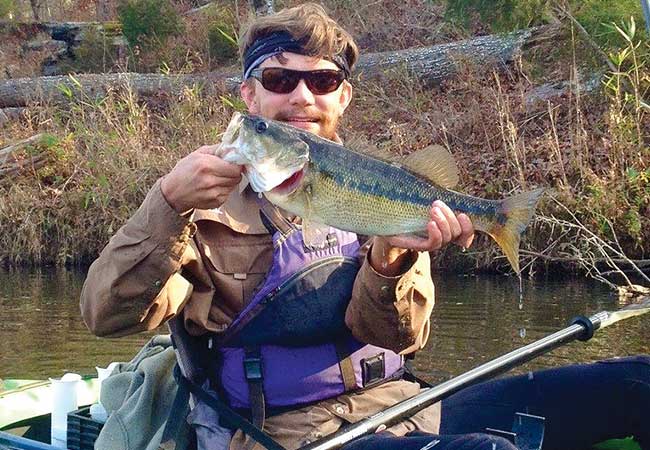By Will Clements
Many Southeastern rivers have both spotted bass and the newly designated Alabama Bass (Micropterus punctulatus, Micropterus henshalli). Spotted and Alabama bass behave in similar ways and share the same preferred habitat, so for the purpose of this article I will refer to them both as just “spotted bass.”
Spotted bass are some people’s favorite and other people’s least favorite bass. They were originally native to the Tennessee and Coosa River basins and have been widely introduced to other watersheds across the Southeast. They are very good at adapting to many of these environments, and hence, we find them in almost every watershed in the region.
Spotted bass have changed fisheries dramatically, making big largemouth bass scarce on many reservoirs and competing with native species like Altamaha, Bartram’s and shoal bass.
Now that they are here, we might as well learn how to catch them, and I have to admit I have come to enjoy fishing for them. Their aggressiveness makes them relatively easy to catch, and their abundance makes them the best choice if you want to take a few home for the fryer.
Spotted bass love rivers and creeks. They can be found all over, but some of my favorite places to catch them are off of deep rock banks and woody blowdowns. I also look for what I’ve come to call “spot spots,” which is anywhere surface debris (like leaves) has collected. This is typically up against logs or in eddies. This surface debris creates a shady place for the spots to hide, and anywhere debris collects on the surface is a pocket of slower water to escape the current. Fishing from a kayak is a great way to access these kinds of areas. Occasionally, you will find them in faster current, especially Alabama bass, but usually native fish like shoal bass and smallmouth still rule the fast water.
To catch spots, I throw any kind of jig including swim jigs, finesse jigs and structure jigs. Spots just love jigs. Jigs also don’t get hung up in the tight cover spots enjoy. Bounce them off of rocks, up and over logs, and drag them through the bottom of a big eddy. There’s a good chance a feisty spotted bass will be waiting.
It’s always good to start small with a finesse jig, especially when fishing a new area. Spotted bass are typically smaller, so small jigs can be great numbers baits. Once you figure out that larger spots live in an area, size up to bigger jigs. Besides jigs, my other favorite baits for spots are spinnerbaits, bladed jigs and small poppers.
I’ve heard many fishermen refer to spots as “dumb,” and I believe it’s true. They’re just easier to catch than other bass, and that makes them a ton of fun. In the heat of the summer, there is no better place to be than floating a creek or river catching feisty spots in the shade.
